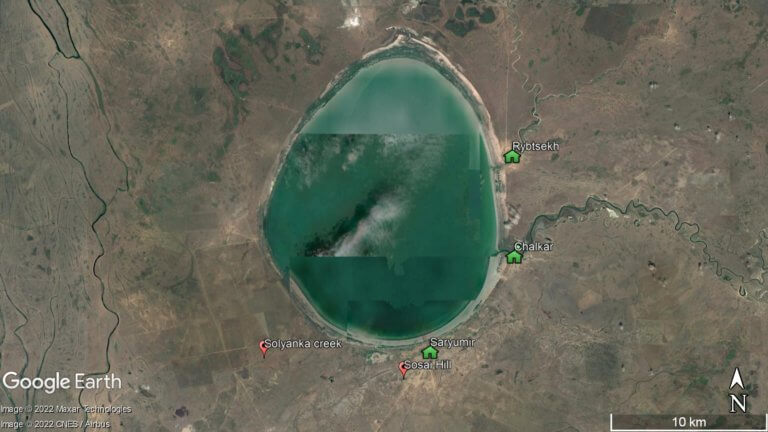
Shakpak-Ata
Tucked away inland of Sarytash Bay is the 10th-century Shakpak Ata, one of Mangystau’s most well-known historical-religious sites. Tauchik, a small village, is the nearest
Established in 1982, the Aktau-Buzachinsky Nature Reserve covers an area larger than Greater London. It’s little-visited, rarely written about, and features a diverse landscape of gorges, small valleys, and coastal plains overlooking the Caspian. The southerly extent stretches for 30km from eastern Sarytash Bay to Kochak Bay and into the Kimbelek Salt Marsh.
The rest of the reserve extends 60km north along the Dolgiy Peninsula, part of the western Buzachi Peninsula, until Aktumsuk Bay. On the peninsula’s north-west coast are the remains of Krasnyy ‘Red’ Dolginets, an abandoned village and collective fishing farm, and the birthplace of decorated Red Army soldier Sisembaev Sham (1919–2004). According to Soviet maps, there may be a few more ruins on the road leading north to Aktumsuk.
Animals living in the area include the Ustyurt mouflon, Brandt’s hedgehog, Persian gazelle, foxes, caracal, steppe polecat, Pallas’ cat, whooper swans, occasional saiga herds, wolves, Caspian seals, and Dalmatian and eastern white pelicans. There are at least 15 reptile species and 30 types of birds of prey, such as vultures and white-tailed eagles. Please note that this information reflects the biodiversity as of the 1990s, and the current fauna composition may have changed since then.
Krasnyy ‘Red’ Dolginets (Красный Долгинец): 44.9583, 51.1007
Dolgiy Peninsula (Dolgi Tübegı/Полуостров Долгий): 44.9071, 51.1391
Aktumsuk Bay (Aqtūmsyq Şyğanağy/Залива Актумсук): 45.0242, 51.2580
Kimbelek Salt Marsh (Kimbelek Sor/Кимбелек Сор): 44.5818, 51.6706
1:200k Soviet map of Aktau-Buzachinsky Nature Reserve, with Dolgiy Peninsula in the bottom-left quarter.
1:500k Soviet map of the Buzachi Peninsula and the reserve, shown on the bottom-left quarter’s upper edge.
The European Commission’s Digital Observatory for Protected Areas digital map of the reserve.
Silk Road Adventures’ photos of Aktau-Buzachinsky Nature Reserve.

Tucked away inland of Sarytash Bay is the 10th-century Shakpak Ata, one of Mangystau’s most well-known historical-religious sites. Tauchik, a small village, is the nearest

Twenty kilometres north of Senek village is Shopan Ata, a circa 10th-century underground mosque that is one of Mangystau’s oldest religious sites. It was first

The brackish, egg-shaped Shalkar Lake – 65km south of Oral – measures 15km x 18km and receives water from two rivers on the east side:
Copyright © Planet Esoterica, 2024. No part of this site, www.planetesoterica.com, may be reproduced in whole or in part in any manner without the permission of the copyright owner. All rights reserved.
Made with 